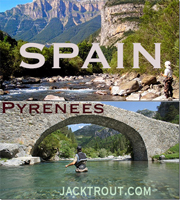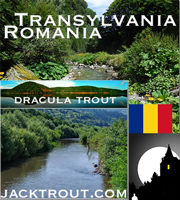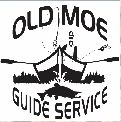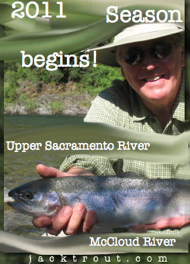*****UPPER SAC FLY FISHING RAFTING TRIPS START MARCH 16TH!! WATER LEVELS ARE PERFECT SIZZLERS AND I’LL BE BACK IN MT SHASTA TO TAKE YOU DOWN THR RIVERS*****
LOWER SACRAMENTO RIVER IS FISHING GREAT!! CALL US NOW FOR A DRIFT-TRIP FLOAT. 530-926-4540
BELIZE TRIPS FOR MONTH OF APRIL – BELIZE TRIPS FOR MONTH OF APRIL – BELIZE TRIPS FOR MONTH OF APRIL
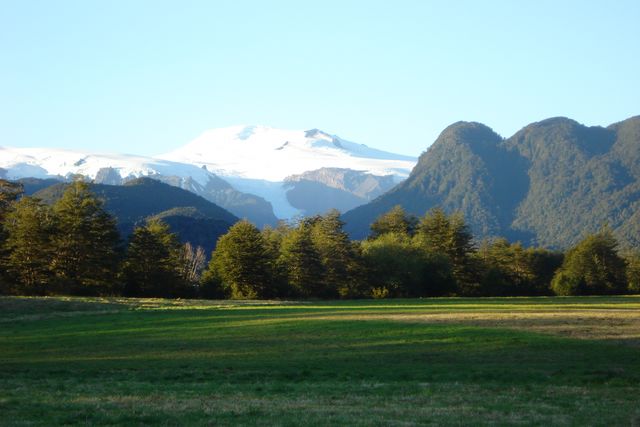
What a great season in Chile! Lots of great fishing, catches and good times. Got my residency established so i have dual citizenship now in the United States and Chile. That took me only 16 years to accomplish, but now I have a golden opportunity in both countries to continue with my life long dream of owning property, a fly fishing business and starting a family.
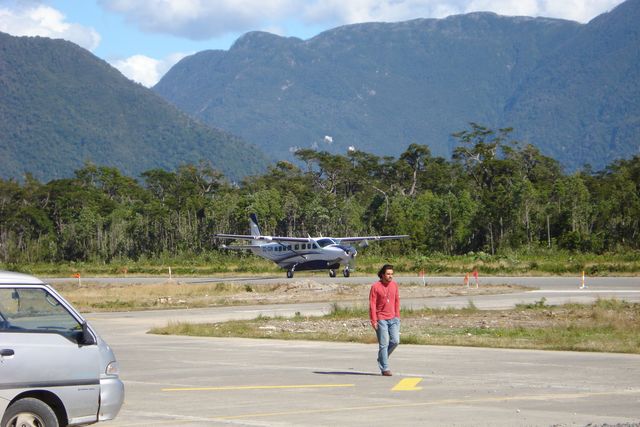
The commuter plane landed and the day couldn’t be more beautiful with virtually no wind and very few clouds in the ocean side town of Chaiten.
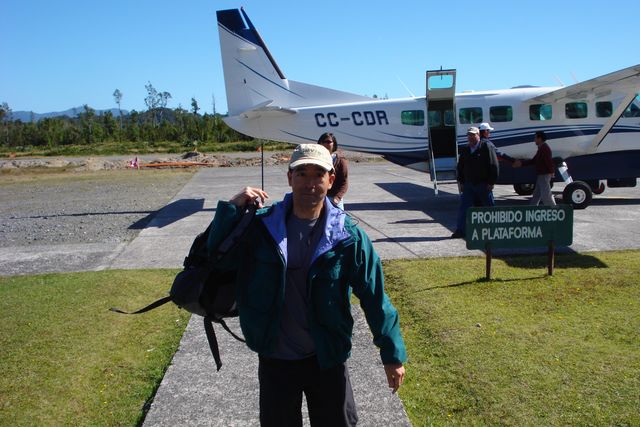
My customers Greg & Alison Takata arrived on time and ready for a great Jack Trout adventure! They said the flight was smooth and the views were spectacular the entire flight.
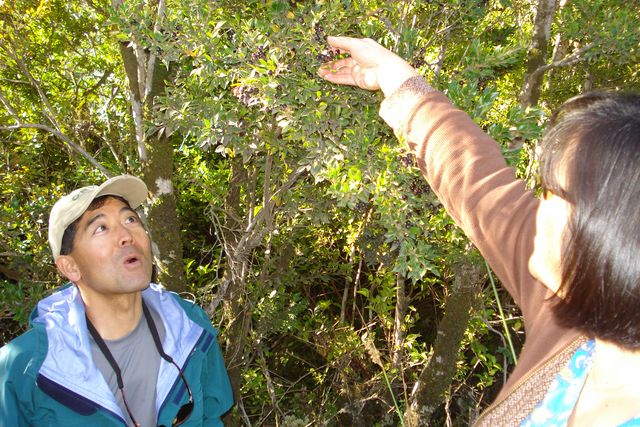
We had some time to burn so I took them out on a dirt road I knew about with some great berries right off the side in a dense forest. The berries were like bluberries, with a touch of mint.
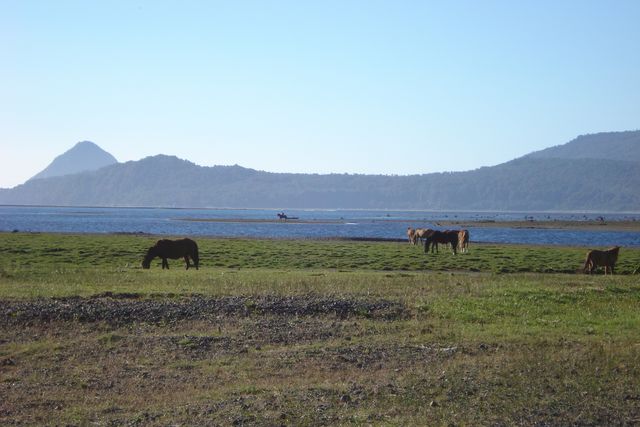
After that we headed to where the Rio Negro spills into the ocean. The horses and the fresh smells of the ocean mist made my senses tranquil and I knew the start of a great week was inevitable. I had two customers I knew from previous trips in California and a plan of attack that couldn’t be beat! We would fly fish the Rio Yelcho, Rio Futaleufu, Lago Yelcho and finish up with the Rio Petrohue.
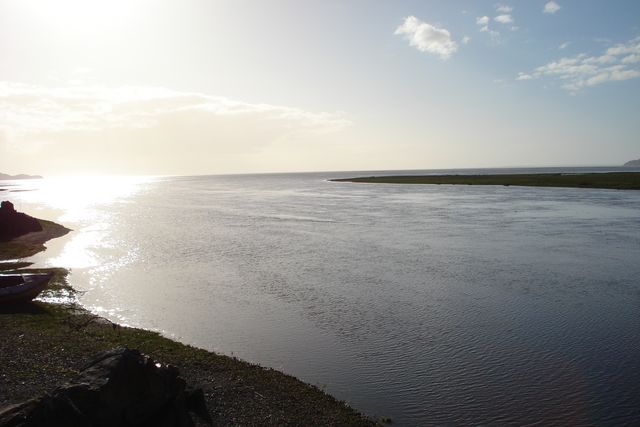
The Rio Negro is fantastic after a rainstorm when rainbows, browns, sea-run browns and steelhead make their way up the river to breath fresh rain water. But on this trip we hadn’t the time to explore and the consistant sunny days was leading us in a different direction.
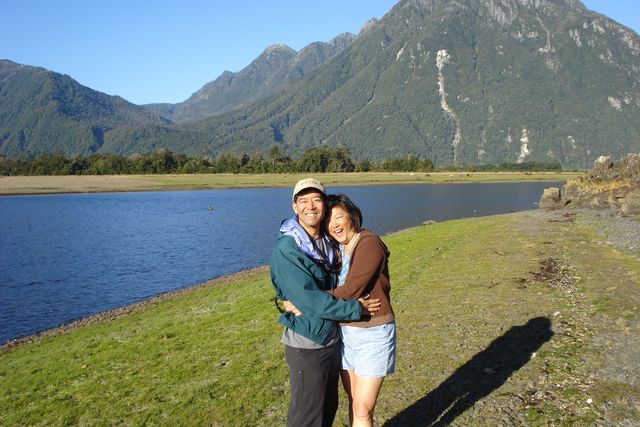
Greg and Alison were so happy to here!
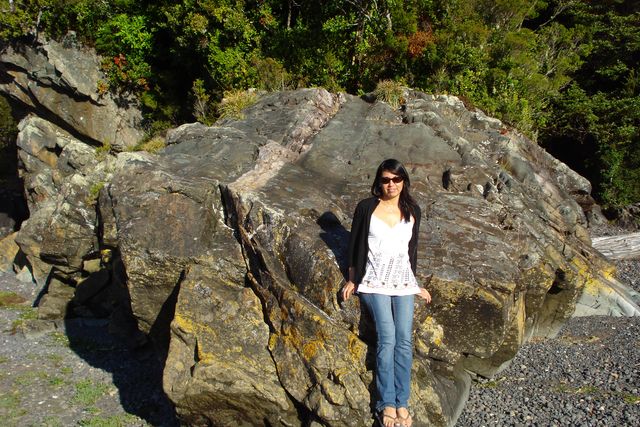
Carola is a girl I met on Valentines and after that day, we spent every day together
and she has become the love of my life. We moved in together and she helped me with my trips and I cooked her some great dinners that I had learned over the years. I think were a great team and look forward to her visit to the United States in June. I love you baby!! Jack
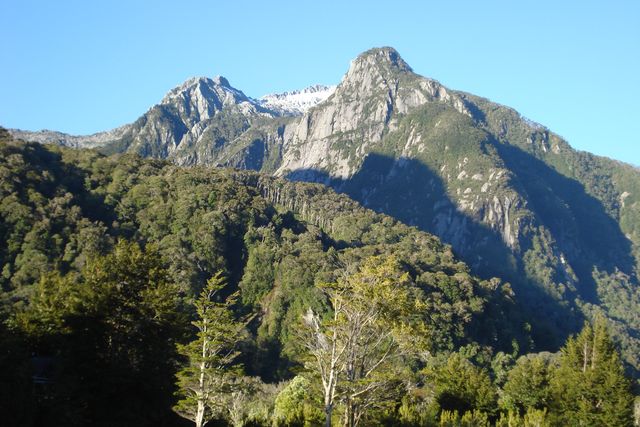
Spectacular views from the ranch we visit often.
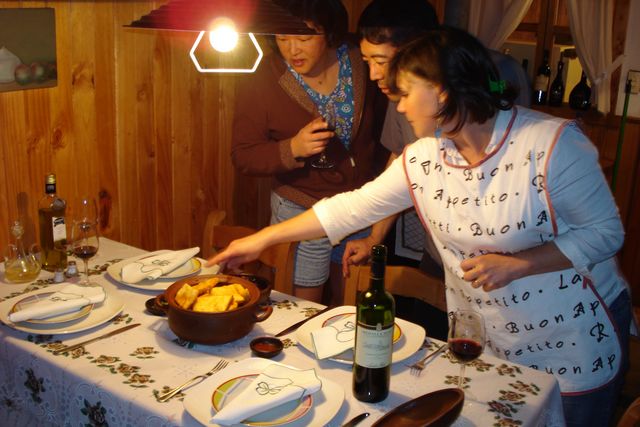
The first night the Takata’s arrived we served them authentic Chilean Sopapillas & Pebre (salsa). It was a hit with all of us.

Lots of fresh vegables and Beef Stroganoff served over rice was a great 1st dinner. The wine and dessert was yummy too, but best of all was having Carola next to my side as we enjoyed the company of Greg and Alison and we laughed and discussed the upcoming week.
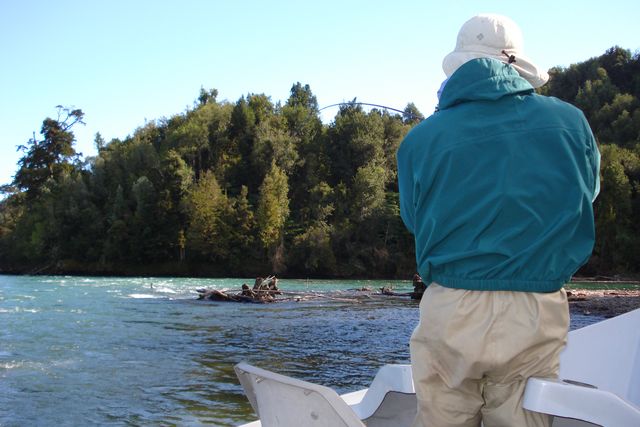
The first day the Rio Yelcho was high and flowing fast. I looked for some feeder creeks
on the edges of the river and this knowledge was rewarded as we got bites immediately.
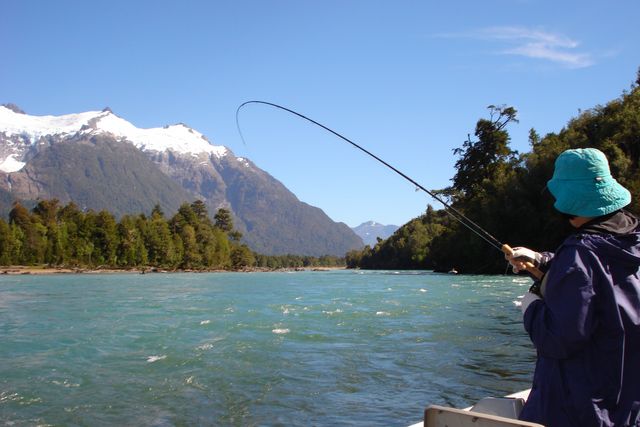
Alison’s fish stayed hooked and we could see it was a beauty! This was her first time ever fly fishing and this size trout was a very respectable catch for a first-timer!
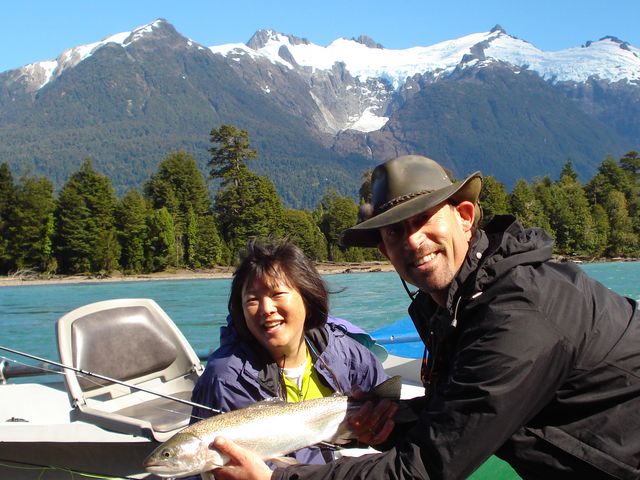
Way to go Alison Takata, a very nice catch indeed. What a great view of the glaciers in the back ground
jt
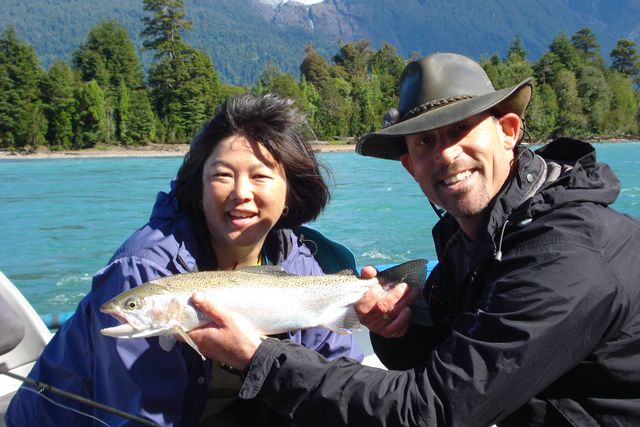
This picture is like a reward for me, I love guiding beginners into great catches and teaching fly fishing to anybody and everyone who has the desire to learn. With 17 years of guiding fulltime 15 years in Chile, who better to teach you or a loved one…?
Call me 530-926-4540 Jack Trout
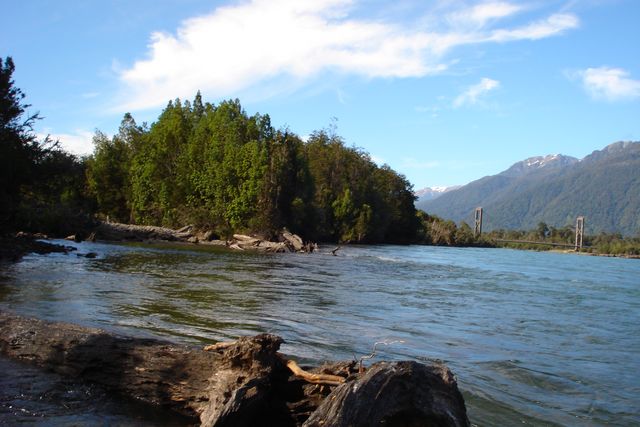
On high rivers fish the edges, I watched jet boats running up and down the river that day with no possibility to fish the areas where the trout were holding and feeding. It also took away from the genuine fly fishing experience. Fly fishing is a quiet sport, motors suck more than gas, they suck! Nothing is better than drifting a river and hearing natures sounds. jt
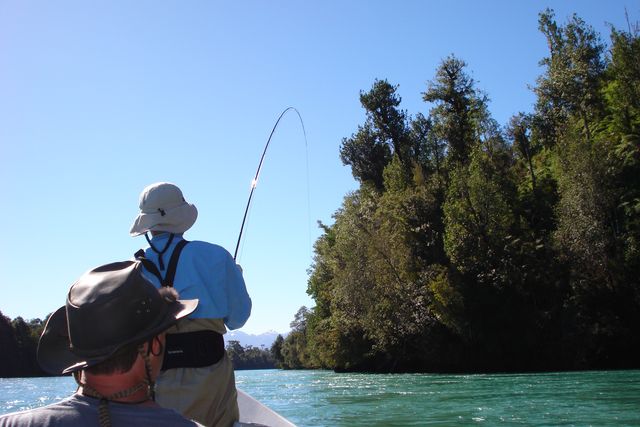
We floated down a little further and Greg stuck a total pig! I could tell by the way it was staying down, it was most likely a brown trout.
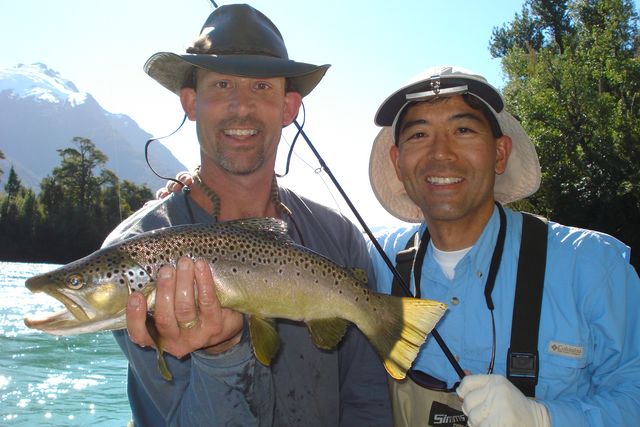
What an awesome Leroy Brown!
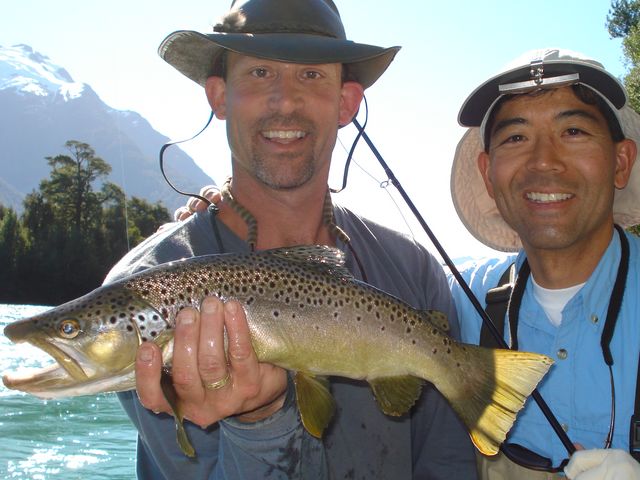
The biggest brown Greg has ever caught!
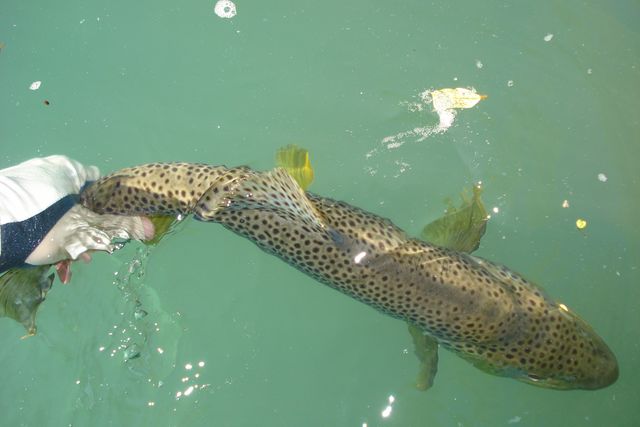
Look at the neck on that creature feature!
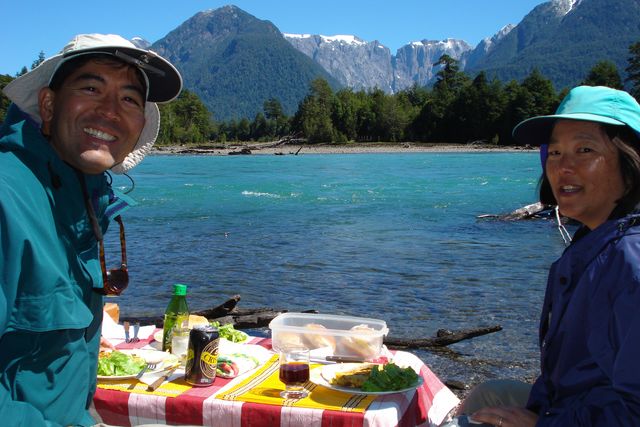
Time for lunch and incredible views! Outdoor lunches are the best in Patagonia.
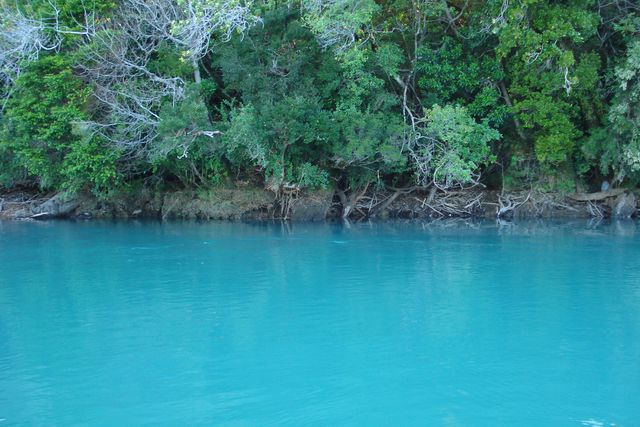
Over at the wall, the fish were feeding on May Flies right near the surface.
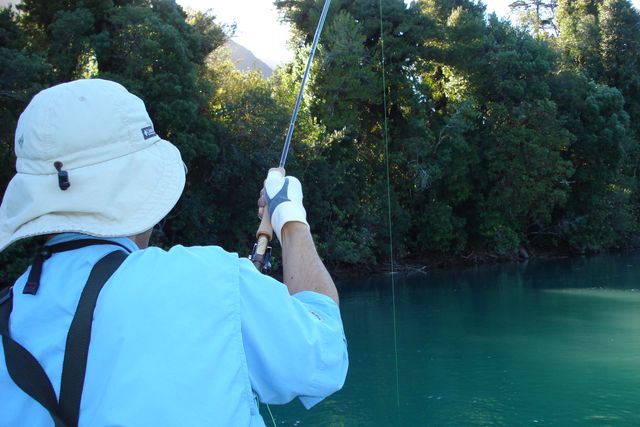
Greg laid out a perfect cast, mended his fly line that had on a very small dry fly and whammo! Fish on!
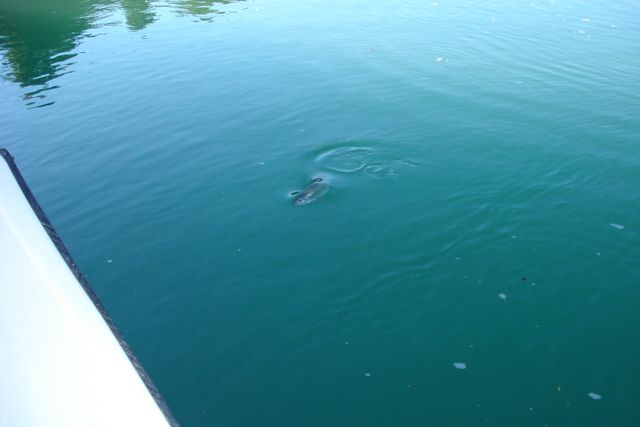
It was a rainbow trout that fought hard when fooled by Greg’s dry fly!
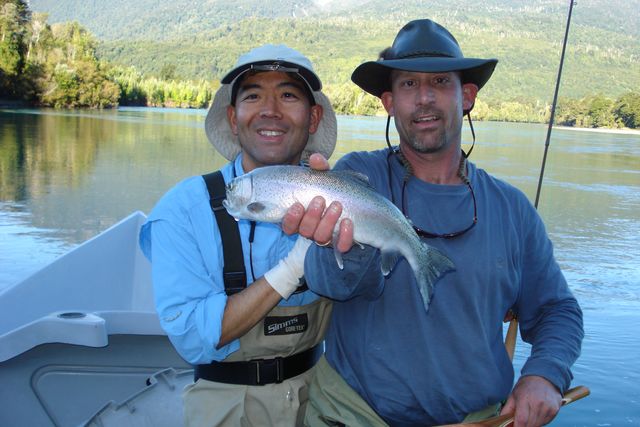
2 guys on dries!

Back at the cabin Clarita our chef made some great pumkin soup!
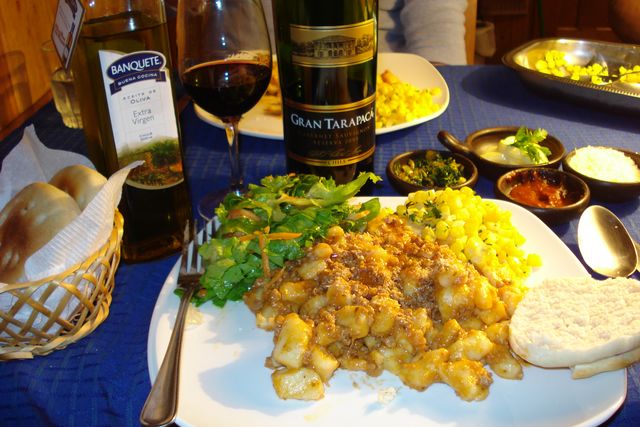
I loved her Gnocchi with a fine Chilean wine.

Dessert was fabulous as always.(Desserts spelled backwards spells stressed! Eat more desserts man!)
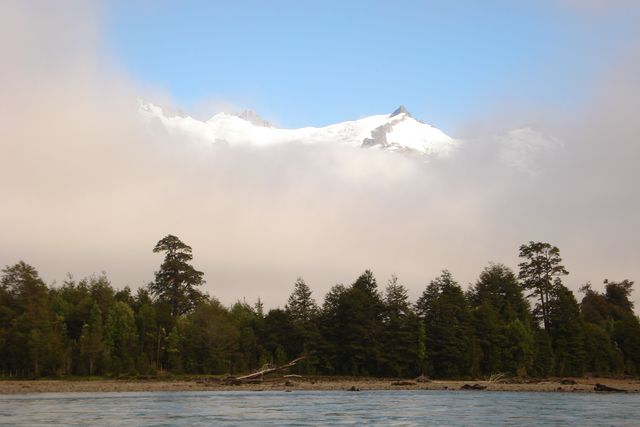
Dream Weaver.
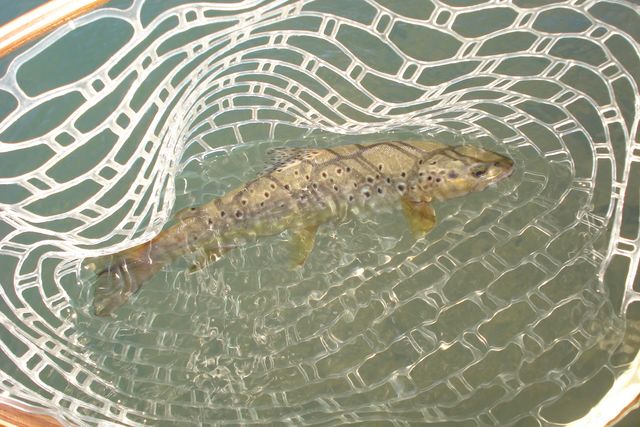
Back in the net!
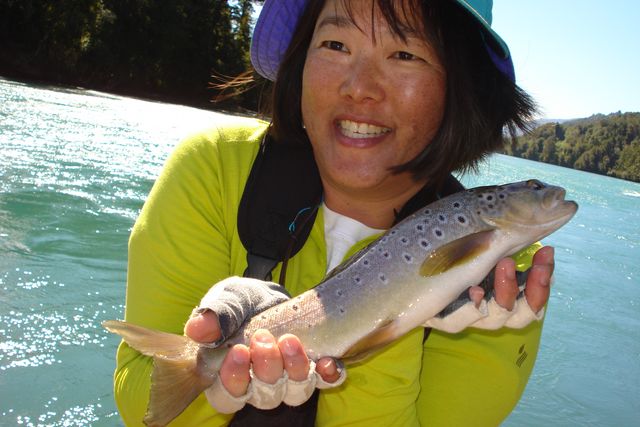
Designer brown trout in vogue this season Alison says!
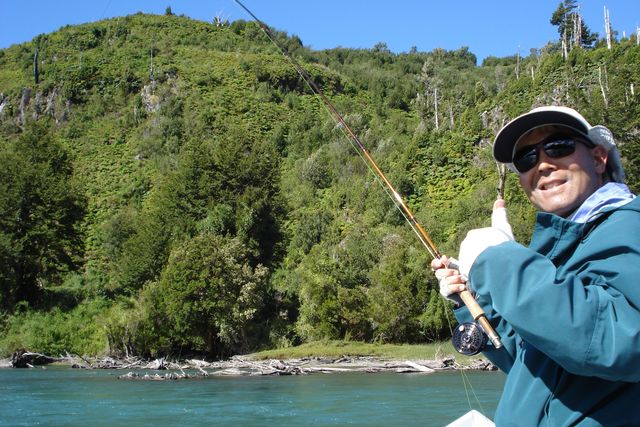
What a great fly fishing day with over 20 landed.. Thumbs up Trout!

Meanwhile, Carola tries her See’s chocolates for the first time! More to come always!
Jack

This girl is a keeper folks, no catch and release here, I left the barbs on and I’m reeling her in!! I really love this girl like no other I have ever met!! JT
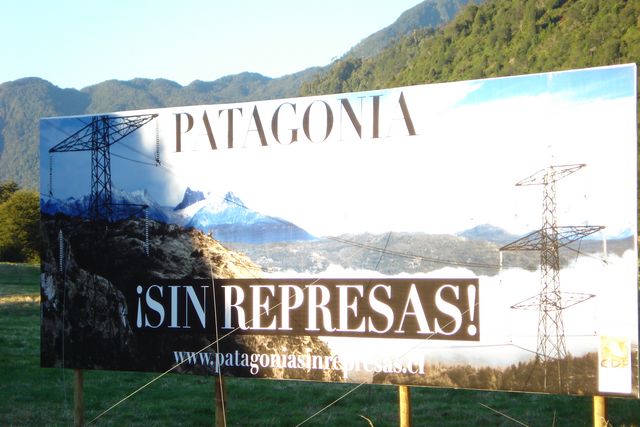
No Dams for Patagonia ~ Sin Represas por Patagonia
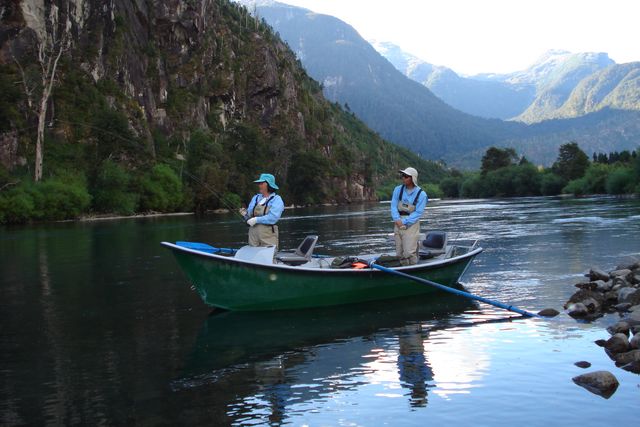
Back on the river, Alison has a on a lunker that might put her in the lead for Sizzler of the Week!!
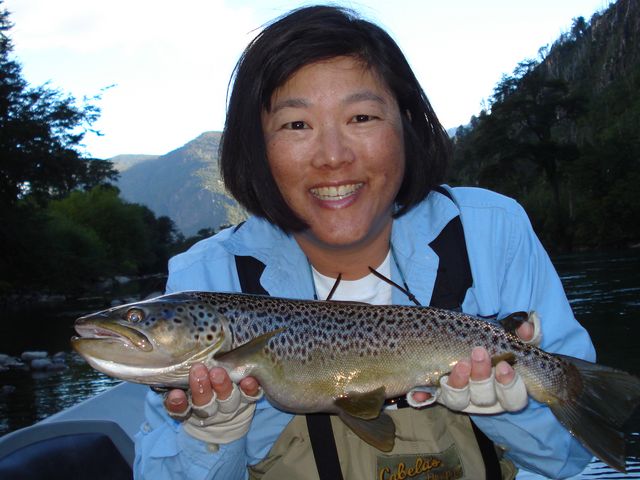
ALISON TAKATA AND HER FIRST WEEK EVER FLY FISHING IS THE SIZZLER OF THE WEEK AWARD WINNER!!
CONGRATULATIONS ALISON, SIZZLER AWARD WINNER!! Many Rivers to You, Jack Trout

Ralph Mouth!
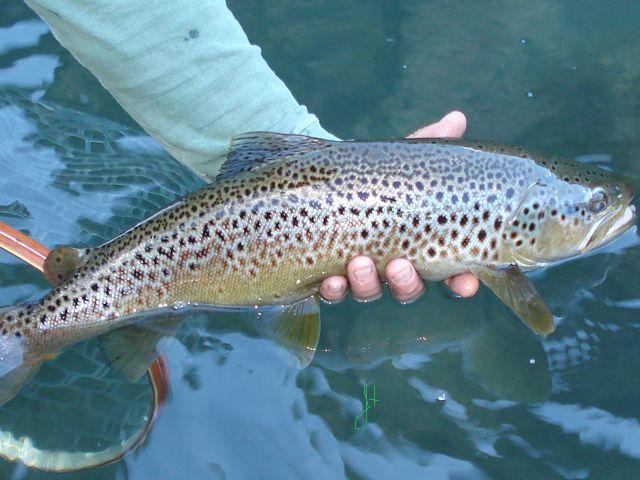
I like the colors and spots on this beauty.
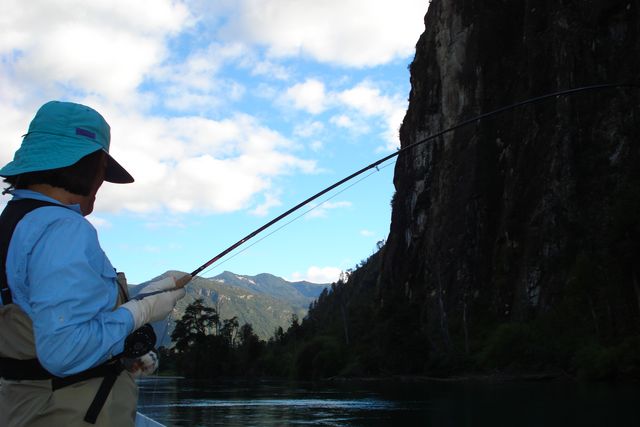
Alison pading the numbers now!
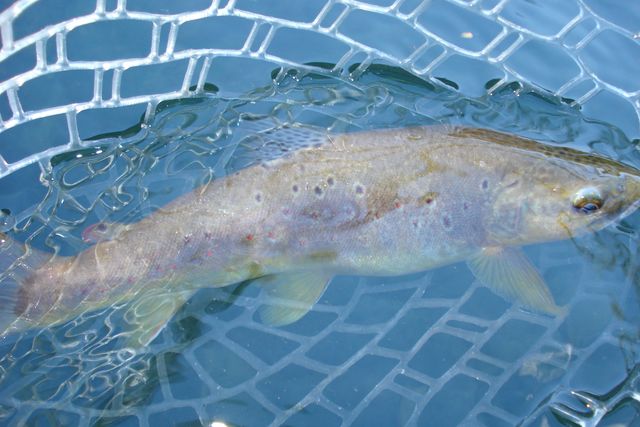
Check out the red adipose fin.
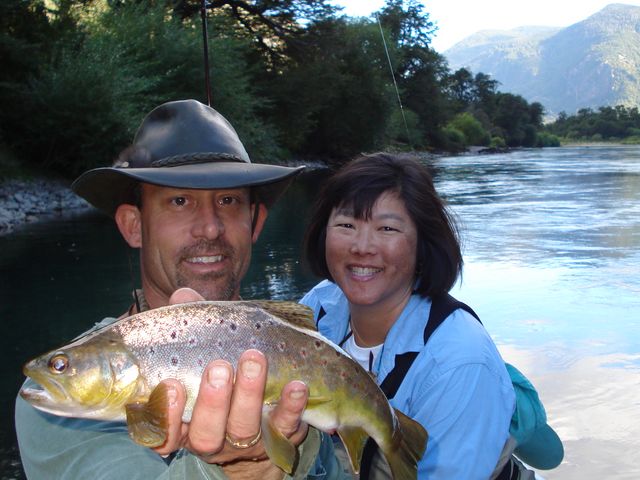
Look at the smile on Alison’s face! That is why I guide folks!! Jack Trout
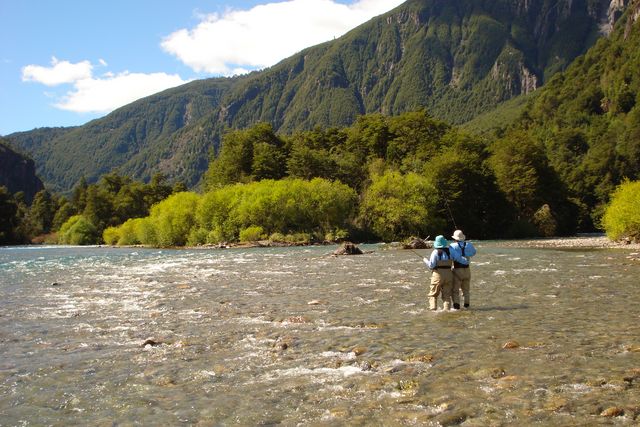
Greg and Alison walking in eachothers arms, while I prepare our lunch outdoors in Patagonia!
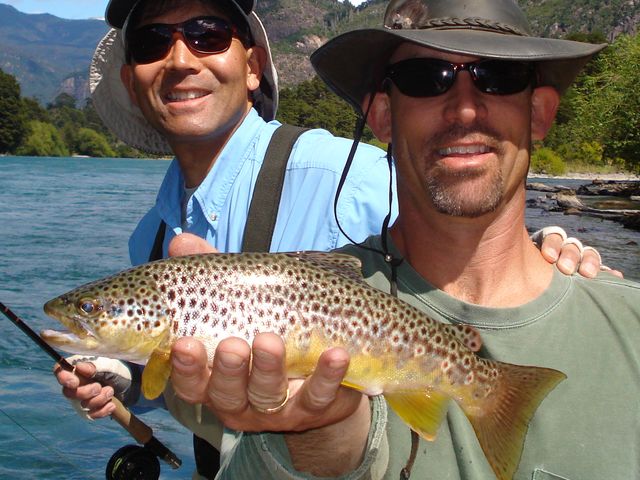
A dream vacation for anyone who enjoys fly fishing, great food, & Chilean culture!
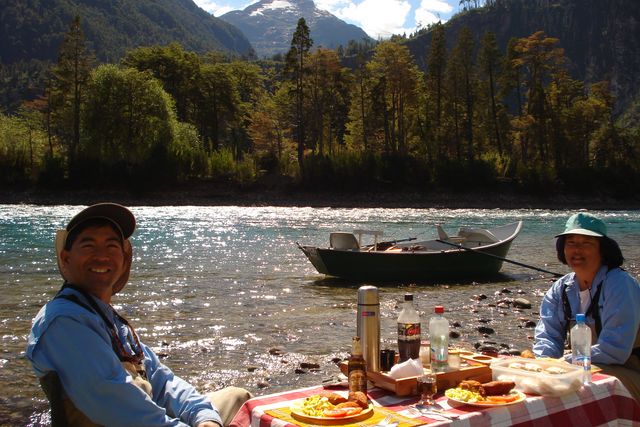
Lunch-Time!
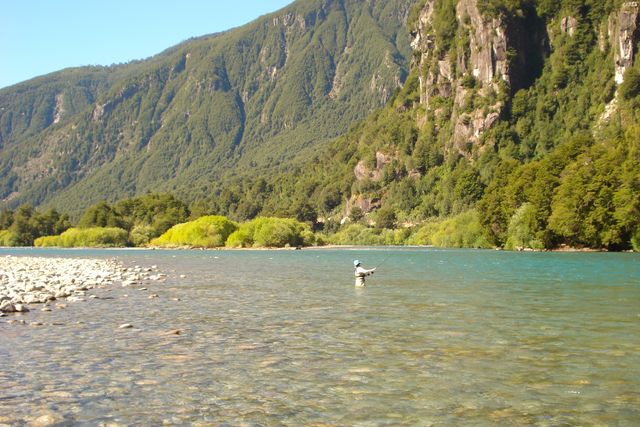
Wading this river is great experience!

Another brown for Alison
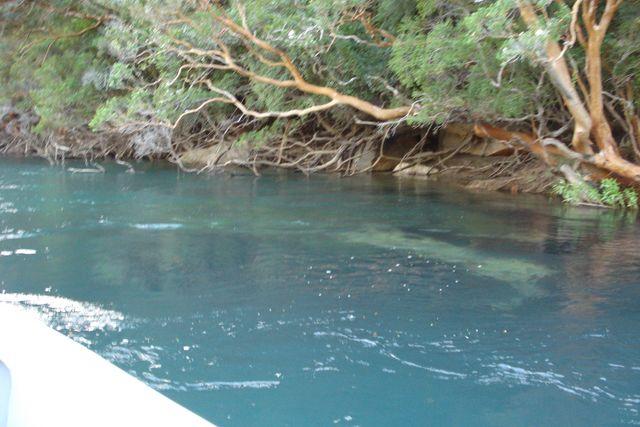
Look under the tree limb and you can see our next catch…. One cast and Greg hooked it!
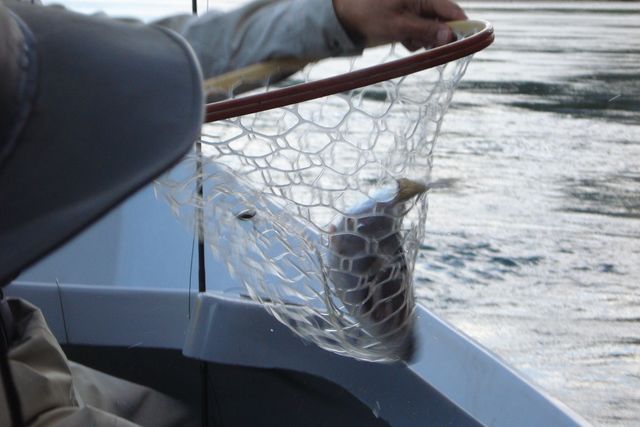
Nice bow in the net!
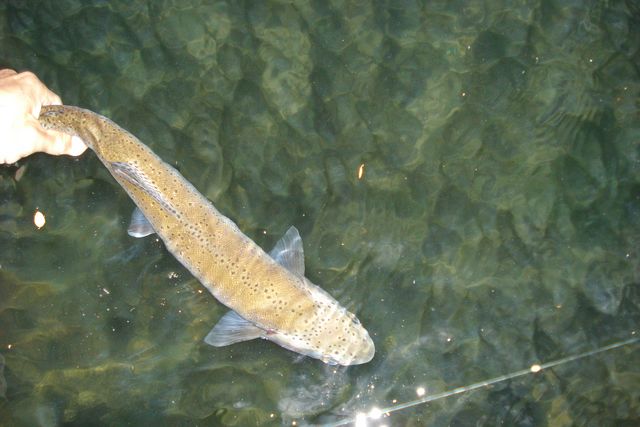
Chucky Monkey!
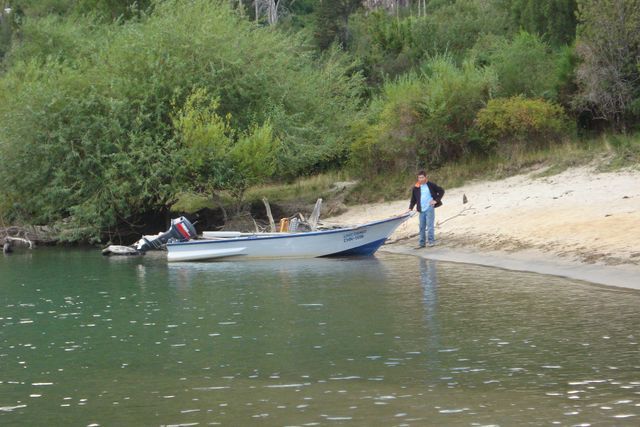
Just like clock work, my friend Alejandro was waiting at 8 pm with the boat to tow us to victory, across the long lake to the take out.
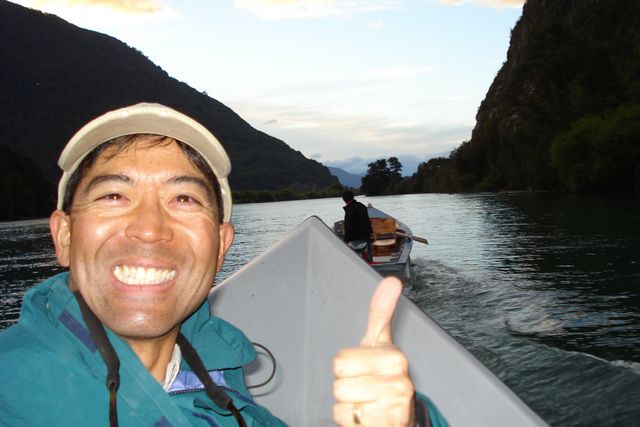
Greg and Alison loved this ride so much and so did my arms!
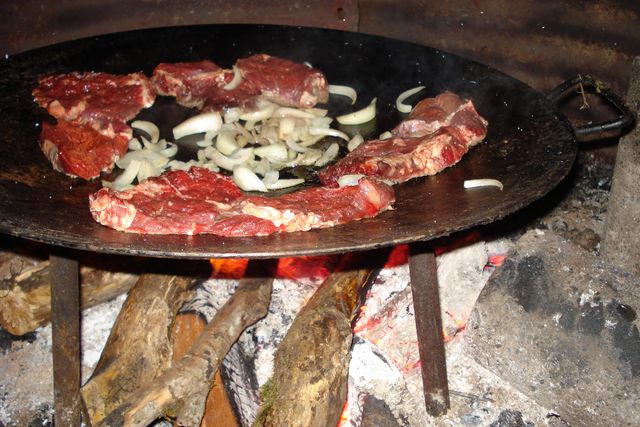
Back at the ranch, the disco was flaming and the steaks were sizzlin!
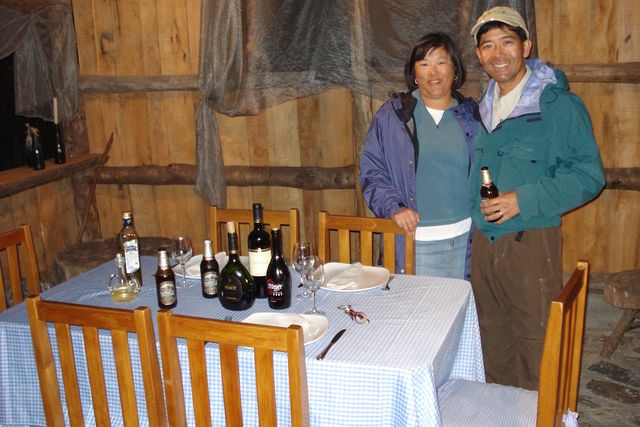
Greg and Alison were having a great time in Patagonia.
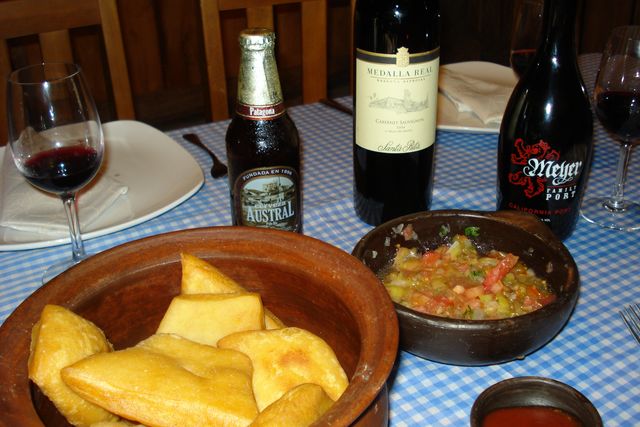
More fun times ~ With beer, wine and port represented.
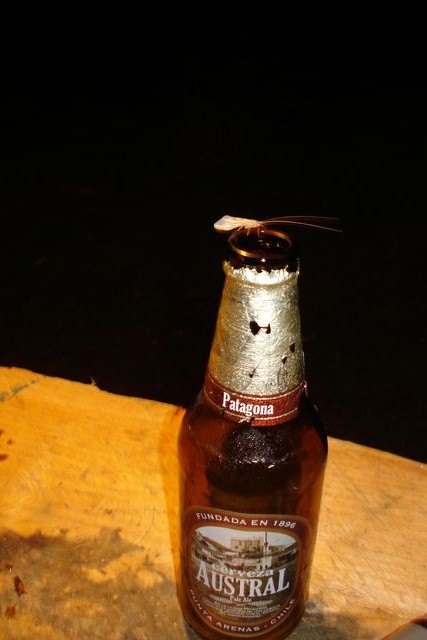
Patagonia Caddis getting drunk?
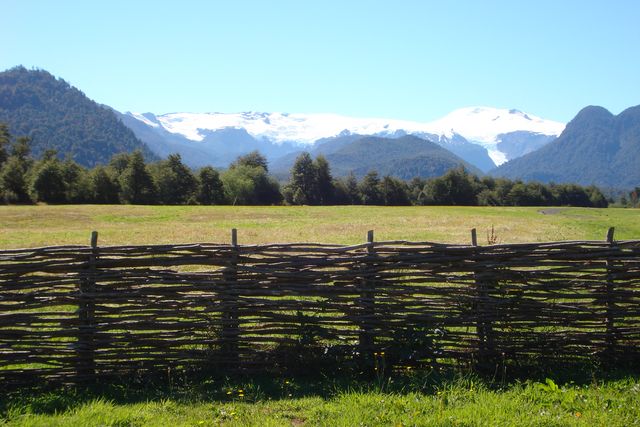
The fencing style originated in the Isla de Chiloe.
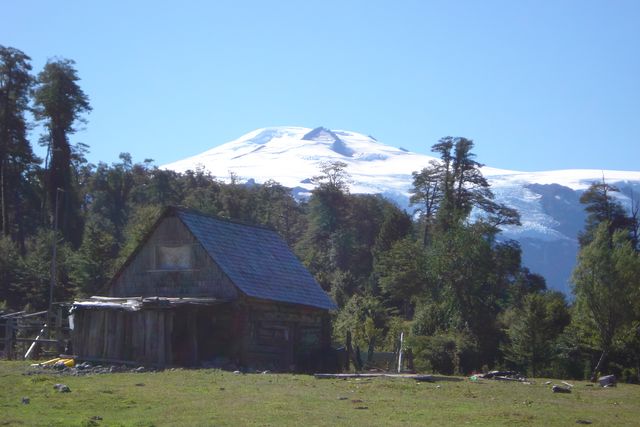
Little house on the prairie! Prairie refers to an area of land of low topographic relief that historically supported grasses and herbs, with few trees, and having generally a mesic (moderate or temperate) climate. Yea man!
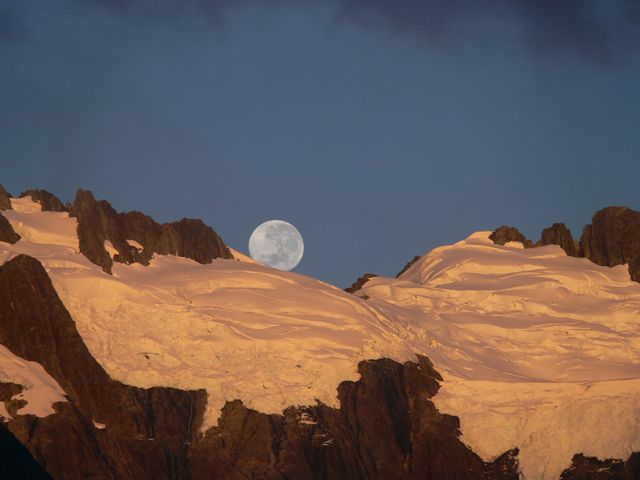
Moon River!
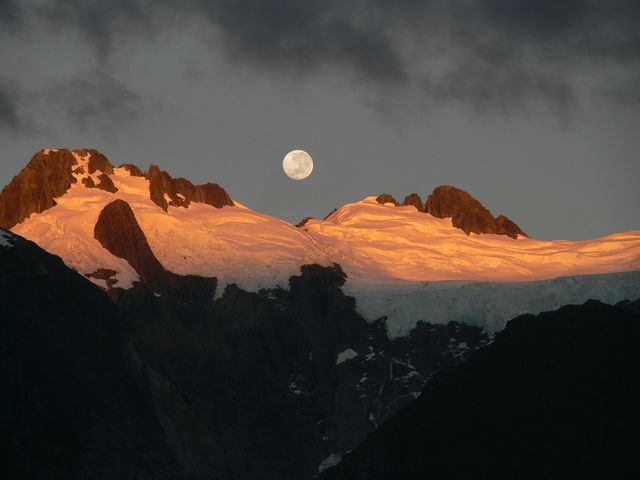
A classic always. Jt
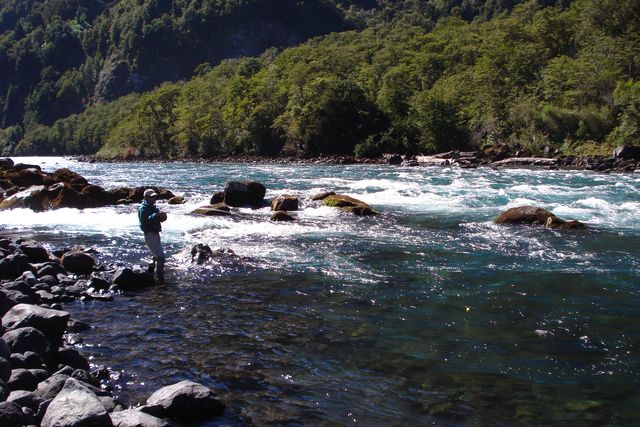
We then flew to another river and had terrific nymphing!
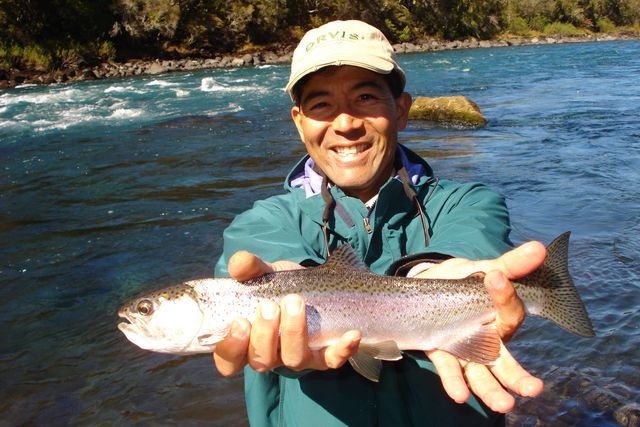
Nice rainbow Greg!
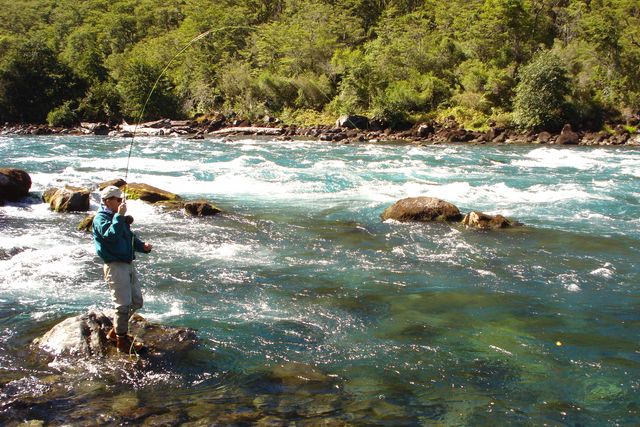
Then a huge fish grabbed Greg’s nymph and ran like no other trout we had caught on the entire trip!
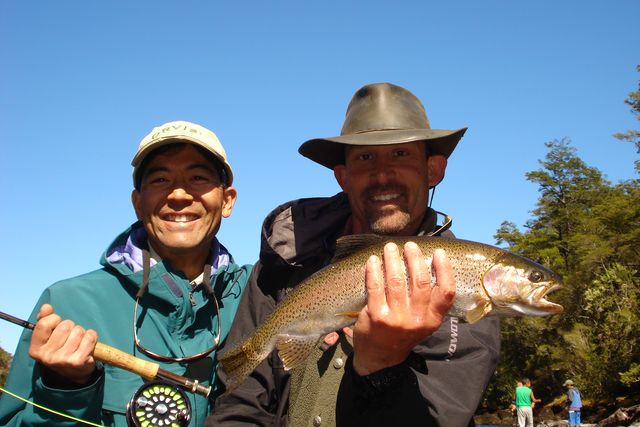
What a great fight this guy displayed.
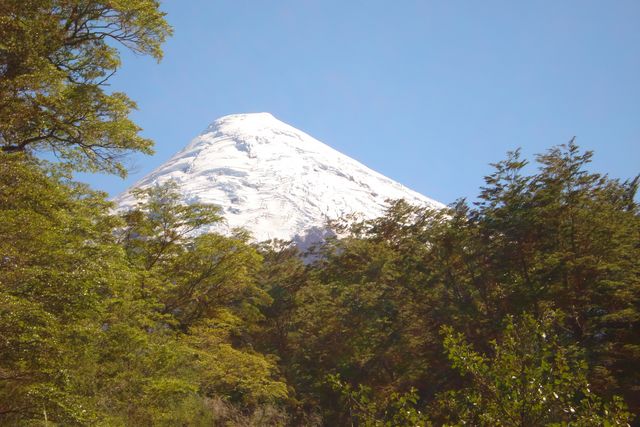
Osorno was our witness, it was a great time for all!
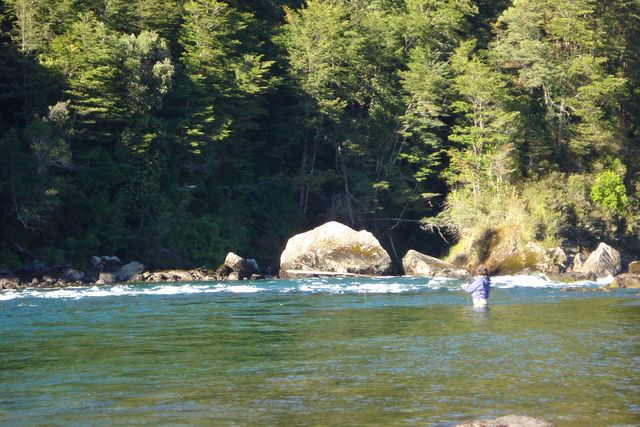
Alison enjoyed her time and also commented that the hotel accomodations were also fantastic.
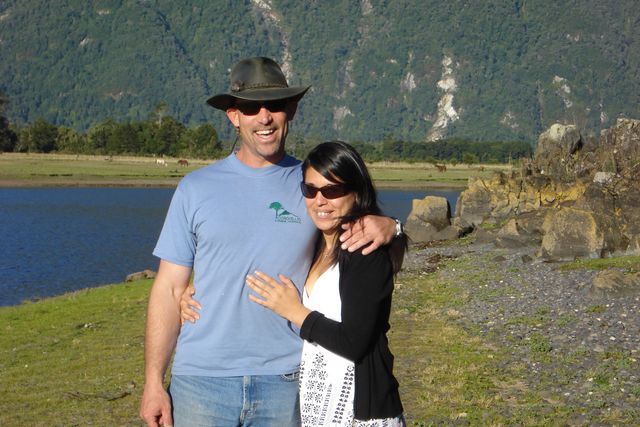
On the flight back to the United States I asked Carola to marry me and she said, YES!!
I am so excited to be with this girl for life. We plan to go back and forth between countries. I feel like the luckiest guy on the planet, I’ve been looking for this girl for all my life. Thanks for watching my adventures!! Many Rivers to You, Jack Trout

EMAILS FROM YOU:
Mums the word. Looked at your photos from Chile. Melissa and I may have to take that trip some day. Congratulations on what you’ve done in your business and your life. We’ll have to keep in touch.
Sincerely,
Art
*Welcome home*!! Dude, your engaged, thats fuckin great! stoked for
you. we’ll have to celebrate! she doesnt come till June?
When we gonna get on the Sac?
Aaron Martin
GENERAL IMPACTS OF THE EL PORTÓN DAM IN THE PUELO RIVER BASIN
GEOAUSTRAL REPORT ~ JUNE 2007
This report investigates the situation currently facing the Puelo River watershed in southern Chile,
where the Spanish energy company Endesa has proposed the construction of a dam and 12,000+ acre
reservoir. This report provides: background on Chile≠s Water Code and the bodies that govern water
use; an analysis of Chile≠s current energy ‘crisis≠; an overview of the Chilean energy matrix and
comparative consumption by sector; and detailed treatment of the Puelo River watershed and
anticipated impacts (environmental, socio-economic, geopolitical, and geologic) of the proposed
dam. The report also briefly discusses proposed hydroelectric projects in other watersheds of
Patagonia. It concludes with a corporate history of Endesa, an analysis of the company≠s role in
domestic and international markets, and a review of its environmental legacy.
TABLE OF CONTENTS
INTRODUCTION
1. BACKGROUND 2
2. CHILE≠S ENERGY CRISIS 2
3. THE PUELO RIVER WATERSHED 4
– Dams
– Water Rights
– Mining Rights
4. ANTICIPATED IMPACTS OF THE EL PORTÓN DAM 7
a. ENVIRONMENTAL 7
– Climate
– Flora and Fauna
– Reloncavi Sound and Estuary
b. SOCIO-ECONOMIC 9
– Impacts within the watershed
– Impacts beyond the watershed
c. GEOPOLITICAL 11
d. GEOLOGIC 12
5. THE MANSO RIVER 13
6. BACKGROUND ON ENDESA 13
INTRODUCTION
On April 17, 2006, the Spanish energy company Endesa announced its intentions to build a dam in
southern Chile≠s Puelo River watershed and to assert the company≠s water rights to the basin
(Santiago≠s Las Ultimas Noticias newspaper, 4/17/06). The proposed project calls for the
construction of a 300-foot dam and the formation of a reservoir of over 5,000 ha (over 12,000 acres)
to produce energy for consumption in the north of Chile.
1. BACKGROUND
Chile≠s Andean-Patagonian watersheds have been threatened by proposed dams for years, but the
issue has now come to the forefront due to energy speculation. Historically, rights to waters
designated as ‘free≠ for agricultural or energy use have been regulated by Chile≠s Water Code, which
is administered by the General Water Administration (in Spanish, Dirección General de Aguas or
DGA) under the Ministry of Public Works. The DGA≠s mission is to administer, regulate, and
supervise the appropriate use of freshwaters, streams, continental and subsurface waters for multiple
purposes that include agriculture, mining, and real estate. Unfortunately, the DGA has also been
responsible for the poor use and mismanagement of Chile≠s watersheds.
The process of obtaining water rights in Chile is open to nearly all individuals or legal entities who
comply with the flexible laws of Chile≠s water sector. While the Water Code itself is
straightforward, it demonstrates a marked bias in favor of water speculation and privatization. While
the law allows for impacted or injured parties to oppose petitions to obtain water rights, opposition is
not usually welcomed. Although the current Water Code has attempted to prohibit speculation on
requested water rights, the ambiguity of the law and its inclination towards privatization have granted
large corporations unrestricted access to the use of continental waters. The Water Code is further
limited by the fact that the Spanish energy company Endesa España retains rights to more than 80%
of Chile≠s rivers and has the resources to pay for permits to continue plans to dam Patagonia≠s rivers.
2. CHILE≠S ENERGY CRISIS
Chile≠s supposed energy crisis is a result of 1) the reduction of gas imports from Argentina and 2) the
Bolivian government≠s statement to share ≥not one gas molecule with Chile≈. Rising consumption
and higher energy needs for the country≠s steadily growing economy have spurred the government to
develop an energy matrix with the goal of bringing Chile to a state of complete energy independence.
Daily demand in Chile is 20 million cubic meters of natural gas, or the equivalent of 20% of
Argentina≠s total daily consumption.
It should be noted that Chile≠s energy situation is considered a ‘crisis≠ only from the perspective of
energy sources. The fundamental problem is the inefficient use of energy and a system that favors
energy excess and waste. To be precise, there is currently no crisis; the creation of a ‘crisis≠ is solely
a mechanism to satisfy the energy demands of transnational mining companies from the north of
Chile. This is corroborated by the fact that most of the consumers and plants are located in the north
as well as by the high present cost of crude oil derivatives. From 2005-2007, Canadian Transelec √
the corporation with the largest network of energy transport lines in Chile √ invested in increasing the
capacity of its high-tension lines in Chile to support higher energy flow between Puerto Montt and
Tal Tal, where the greatest distribution centers and consumption of mining corporations are located.
Additionally, the Puerto Montt substation, which acts as a means of access to the circuit (switch) for
the interconnecting electrical system (SIC) from the southern part of the country, was equipped with
three CER reactors (Compensación Estática de Reactivos) that function with radioactive elements.
Local and national authorities have neglected to investigate this reactor system.
For years, gas shortages from Argentina have coincided with attempts by transnational and Chilean
corporations to appropriate Patagonia≠s rivers and generate lucrative business deals with mining
companies from northern Chile.
Distribution of energy consumption in Chile≠s energy matrix is outlined by sector in Table 1. This
information was published in July 2005 by Chile≠s National Statistics Institute, Subdepartment of
Statistics Related to Industry, Mining, Improvements, and Energy (Anuario Estadístico Sector
Eléctrico 2004):
Table 1
Sector
Hourly consumption (GW)
Percentage of total sector
Mining
17,000
37%
Industrial
15,500
34%
Commercial
5,000
11%
Agricultural
500
1%
Residential
8,000
17%
Source: INE 2005. Compiled by Geoaustral
Table 1 demonstrates that two economic sectors (mining and industry) are alone responsible for
consuming over 70% of Chile≠s energy matrix. For the most part, these do not reflect state-owned
companies but rather transnationals that do not pay taxes or produce jobs from a natural resource that
belongs to all Chileans. Chile≠s citizens consume only 17% of energy (through the residential
sector), yet √ through the damming of Patagonia≠s natural resources √ are expected to subsidize the
energy consumption of Chile≠s wealthy mining and industrial interests.
The current structure of free market economics and the matrix utilized is based on providing the
incentive for energy consumption, rather than for efficient energy use. Thus, in the context of
excessive consumption and a perceived energy crisis, large energy corporations have taken the
opportunity to plan the development of hydroelectric plants, under the premise that in a ≥problem
country≈, the lack of energy verges on a national emergency. Although the companies promote
reservoirs and hydroelectric stations as clean energy, these technologies have never been clean. They
are a significant contributor to global warming, generate millions of tons of methane and carbon
dioxide, and are statistically proven to pollute more than electro-thermal stations.
The objective of energy companies such as Endesa and Colbun and mining companies like Xstrata
(formerly Falcon Bridge) is to gain control of Patagonian waters to establish highly lucrative
business. They are not above manipulating the citizenry and ≥selling a green image≈ of their efforts
or presenting commercial interests as altruistic while simultaneously seeking political support
through influence-peddling. In technical plans, investigations to exempt their projects are also riddled
with irregularities, and environmental consultants are hired to demonstrate that dams are beneficial to
the environment. Sociologists and psychologists are employed to target communities that may be in
resistance to a proposed development. The companies promote the social benefits that will result
from corporate plans to exploit the region≠s natural resources and do not acknowledge the social
costs to be incurred by Patagonia≠s inhabitants. They fail to communicate that the prime economic
benefit of proposed development is corporate, while the prime cost to be borne is social.
3. THE PUELO RIVER WATERSHED
The binational Puelo River basin is one of the most important shared hydrologic complexes in
Patagonia [Map1]. It has an area of approximately 880,000 hectares (2.18 million acres), of which
300,000 ha (741,000 acres) are in Chile and 580,000 ha (1.4 million acres) in Argentina. On the
Argentine side, the basin is protected by Lago Puelo National Park and stands out for the important
valleys of Río Azul, Epuyén, and Cholila and for the flow input to Lago Puelo. On the Chilean side,
the basin is comprised of diverse hydric systems that include lakes (Lower Lago Puelo, Las Rocas-
Azul, Totoral, Blanco, and Tagua Tagua) and rivers (Ventisquero, Traidor, Tigre and Manso, among
others).
According to hydrological studies obtained through historical records from Endesa≠s Carrera de
Basilio station from 1943-1987, the average flow of the Puelo River is 666 m≥ per second (23,520
cfs). This volume classifies it as one of the rivers with the highest flow in Patagonia, after the Baker
River in Aysén province. From a biological point of view, the watershed stands out for its floral and
faunal diversity, principally due to the abundant temperate evergreen rainforest and presence of
conifers (Austrocedrus chilensis √ ciprés de la Cordillera and Fitzroya cupressoides – alerce).
Populations of the native camelid huemul (Hippocamelus bisulcus) are notable
as well and have yet to be thoroughly studied. In recent decades, the
watershed has experienced an increase in visitation by tourists, who enjoy the
area≠s biological offerings and minimal human intervention on the landscape,
despite its proximity to urban areas.
Map 1: Location of the Puelo River Watershed
.. Dams
Endesa España, the largest hydroelectric company operating in Chile through various power stations,
has held water rights to the entire flow of the Puelo River since 1990. Originally, Endesa had
planned to build a 180-meter dam with 1250 megawatts of power near Tagua Lake, which would
have created the largest artificial lake in Chile. The project was delayed for various reasons and
recently modified in scale and location (reduction of the flow and location of the dam). The new
location is slated to be in the El Portón zone, in front of Llanada Grande. Satellite imagery from
Google Earth (2006) shows the location of the dam project. The red line marks the limits of flooding
and the affected zones, which will cover more than 5,000 ha (12,350 acres).
Puelo River Basin (3D). Before
Puelo River Basin (3D). After 2010
.. Water rights
The construction of El Portón dam on the Puelo River is dependent on the concession of water rights
granted by the General Water Administration (DGA) in the Lakes Region. Under DGA Decree 570
(September 12, 1990), Endesa España was given non-consumptive use rights and permanent tenure
of surface waters for 850 m≥/second (30,000 cfs) on the Puelo River in Llanquihue province in the
municipality of Cochamo.
This right was obtained through special process, as the DGA at the time rejected the request due to
technical defects. Later, through judicial petition, Endesa was able to compel the DGA to expedite
the corresponding right through DGA Decree 570 (1990) for non-consumptive use and permanent
tenure of surface waters for 850 m≥/second (30,000 cfs) of the river≠s volume. An analysis of the
data used during this period (Carrera de Basilio measuring station, 1943-1987), clearly demonstrates
that average flow was only 666 m≥ per second (23,520 cfs). This discrepancy suggests that Endesa
requested more water than was naturally available and altered the data to obtain rights to more water.
On April 17, 2006 Endesa España announced (in Las Ultimas Noticias as well as in the Diario
Oficial de Chile, the official newspaper of the Chilean government) its intention to assert its use
rights to the Puelo River, albeit with some changes in structure and volume from previous plans. In
essence, Endesa proposed to move the dam and hydroelectric station to El Portón, in front of Llanada
Grande, where it is slated to have an installed capacity of 320 megawatts and a flow of 400
m≥/second (14,125 cfs). This will require a 103-meter dam and damming of the river up to 170
meters above sea level. The new reservoir will be over 5,000 ha (12,000 acres) in size and will allow
the accumulation of 170 million m≥ of water (over 6 billion cubic feet).
With this change in position and reduction in flow, Endesa is yet again submitting a claim for non-
existent waters, as the recorded flow in the new proposed location does not exceed 300 m≥/second
(~10,600 cfs). Geoaustral has conducted a volume and flow analysis of the Puelo River from Los
Hitos to Reloncavi Sound, using 1972-1985 data from the limnimeter located in Los Hitos (owned by
Endesa, currently inactive) as well as additional flow input from the Ventisquero, Cataratas, and
Totoral Rivers. These figures have been compared with volumes registered in the Cerro Mesa area
and 1962-1984 data from another limnimeter in the area (owned by Endesa). Through its
investigation, Geoaustral has determined that Endesa is again claiming more water than that available
in the river. Chilean authorities continue to overlook technical details such as this.
.. Mining rights
On May 9, 2007 at 1:40pm in Chile, in the branch offices of the First Civil Court in the city of Puerto
Montt, Endesa representative Maria Teresa Cañas Pinochet submitted 52 requests for mining
reconnaissance for 12,500 ha (~31,000 acres) along the Puelo River and watershed. Through this
process, Endesa is utilizing the Mining Code to assume control of the land and devalue properties
that will flood once the project commences. The requests cover the area of Los Guindos near the
confluence of the Manso and Puelo Rivers, as well as Santo Domingo, El Portón, the Primer Corral
cemetery, walkway, most of Ventisquero Stream and also along the Puelo River until Mosquito Lake
or Las Rocas Lake, very near the outlet of Lower Lake Puelo.
4. ANTICIPATED IMPACTS OF THE EL PORTÓN DAM
Damming the binational Puelo River watershed would involve a series of potential risks that do not
appear to be of concern to Endesa. Despite Chile≠s law (Law 19.300 Basis of the Environment) that
requires companies to present environmental impact assessments and notify impacted communities,
judgments tend to benefit corporations rather than protect the environment or communities. Political
application of the law creates the impression that it was created to protect investment and
development of projects that exploit natural resources under the guise of protecting them.
Digueñe or Llao Llao (Cyttaria spinosae).
The effects of damming the Puelo River will have important impacts at environmental, social,
economic, and political scales. The most evident are detailed in the following section
.
4A. ENVIRONMENTAL IMPACTS
The damming of the river, cutoff of water flow from Reloncavi Sound and new body of water formed
by the respective reservoir and its surface waters will produce marked environmental changes along
the entire watershed, from its source in the Puelo Lake zone in Argentina to Reloncavi Sound in
Chile. General impacts will include the following:
CLIMATE
Effects on climate will be glaring but at the same time very difficult to predict with models, as linear
formulas are of limited use when applied to the non-linear biological patterns of nature. Predictive
models allow little room for the variation and unplanned effects that occur in natural cycles. The
most overt climate-related effects will be:
.. The water surface and increased level of evapotranspiration will provoke a strong variation of
weather patterns.
.. Increase in relative humidity indices.
.. Increase in precipitation.
.. Reduction of average minimum and maximum temperatures.
.. Variation in number of sunny days in the watershed.
FLORA AND FAUNA
The impact on flora and fauna will be both direct and indirect. The most acute effects will result
from the damming of the river and flooding of thousands of acres of forest and associated wildlife
habitat. Flooding will result in the asphyxiation of thousands of species that form part of the diverse
mountain ecosystem. Additionally, the change in climate will provoke disturbances to biological
patterns of species that inhabit other areas of the basin, in particular sensitive species such as the
huemul that live in proximity of the zone to be flooded. Key impacts will be:
.. Impact on biological cycles of terrestrial and aquatic species.
.. Destruction of thousands of acres of evergreen temperate forest.
.. Destruction of important populations of conifers (Cipres de la Cordillera, Alerce) along the
length of the basin.
.. Increase in forest destruction conducted purely for energy purposes.
.. Increase in trash and residues due to the increase in personnel contracted to work in the
construction crews.
.. Immediate death and subsequent decomposition of thousands of species and carbon-fixing
organisms, which will add thousands of tons of methane and carbon dioxide to the
atmosphere, thus increasing the effect of global warming.
RELONCAVI SOUND AND ESTUARY
Damming the Puelo River would also have serious effects on Reloncavi Sound, as the Puelo≠s large
flow ≥represents approximately 68% of the total input of fresh water that enters the estuary≈ (Jorge
Leon, 2005). The Puelo River is the highest contributor of dissolved oxygen to the estuary and
drastically influences the water column, reduces salinity indices and dissolved chlorides, and
annually inputs hundreds of tons of organic material and mud to maintain the food chain. In sum, the
cut-off of the freshwater flow to the estuary would provoke an environmental catastrophe and have
irreversible effects on the flora and fauna. This environmental impact would have grave
consequences for the coastal fishing economy, with the greatest losses to be felt by the salmon
farming sector, mussel sector, and local fishermen. The impact on Reloncavi Sound and estuary
must be studied in greater depth, as the proposed dam could provoke one of the greatest
environmental and economic disasters on an inland body of water.
The city of Puerto Montt empties over 90% of its liquid residues into the bay through a submerged
outlet. Dilution and recycling of the mud depends on the level of dissolved oxygen in the inland
waters, the temperatures in the top of the water column, and the currents and surges present. The
most probable impacts on Reloncavi Sound and estuary are the following:
.. Drastic reduction in dissolved oxygen in the water column along the zone of influence of the
Puelo River, especially in Reloncavi Fjord.
.. Complete loss of input of organic matter (mud) to Reloncavi Sound and attendant loss of the
basic source of nutrients for trophic chains.
.. Increase in average water temperature and in loss of dissolved oxygen in the water column.
.. Excessive increase in salinity indices.
.. Massive death of icthic species due to lack of oxygen.
.. Increase of species (marine worms, etc.) that proliferate in less-oxygenated habitats and with
high salinity indices.
.. Increased algic blooms or incidences of toxins such as Alexandrium catenella, Dinophysis
acuta, Heterosigma akashiwo, etc.
.. Negative effects and reduction of the phytoplankton base that maintains the food chain of
filterer species.
.. Increase in mortality indices of cultivated salmon due to low oxygen or algae blooms.
.. Reduction of the percentages of dilution of residues emptied by the sanitation service ESSAL
(Empresa de Servicios Sanitarios) to the Sound and increase in pollution along the coast.
.. Lowering in quality of inland waters and increase in the presence of fecal coliforms and other
contaminants.
.. Catastrophic and irreversible effects to the marine ecosystem of Reloncavi Sound.
.. Significant macroeconomic effects on the Puerto Montt business community and on
communities bordering Reloncavi Sound.
.. Significant loss in the appreciation of coastal properties.
.. Critical reduction in the area≠s revenue stream due to reduced tourist flow.
4B. SOCIOECONOMIC IMPACTS
IMPACTS WITHIN THE ENTIRE WATERSHED (CHILE AND ARGENTINA)
Throughout the 880,000-ha watershed, damming would have a cascade effect that would exacerbate
ecosystem damages and make predictions through simulation modeling a challenge. From an
economic perspective, the financial health of the watershed≠s population would be significantly
impacted, as the principal revenue stream comes from tourism and agricultural activities that are
highly sensitive to excessive moisture. The new hydrological regime and climate parameters would
provoke grave changes that include:
.. Reduction in the number of visitors to Puelo Lake National Park who access the Pacific
(Chilean) side of the watershed.
.. Negative effects on the operations and profitability of tourist services in the El Bolsón
(Argentina) area and along the length of the watershed.
.. Shift in seasonality of agricultural crops and arrival of disease and pests favored by the
increase in relative humidity.
.. Grave effects on early crops due to increase in number of cold and freezing days.
.. Increase in unemployment or loss of jobs due to a decline in the revenue stream entering the
tourist and agricultural livelihood sectors.
.. Increase in social municipal costs and government resources needed to compensate for
revenue losses in the tourism and agricultural sectors.
.. Increase in bank credit conflicts upon failure to comply with expectations of established
tourist businesses.
.. Displacement of small-scale tourist operations established by local farmers along the length
of the watershed and in the zone to be flooded.
.. Destruction of fly-fishing zones along Puelo River and Ventisquero Stream.
.. Eradication of fly-fishing lodges established in the Puelo River area.
.. Increased governmental expenses to create training programs for people directly and
indirectly affected by the loss of land or the decline of ecotourism activities.
The impact on the local population living in the zone to be flooded would be extremely severe. The
creation of a 5,000-ha reservoir would mean that occupied homes, agricultural fields, grazing areas,
and historic sites such as El Portón (the main gate), El Balseo (the ferry landing), La Pasarela (the
walkway), Primer Corral and its cemetery, the valley of Ventisquero River, Lago Verde, La Vega
and other places would disappear completely. The most notable social effects would be:
.. Displacement of all inhabitants and loss of culture and quality of life.
.. Irreversible destruction of local traditions of the families of the region≠s first colonists.
.. Loss of ancestral memory upon inundation of the Primer Corral cemetery.
.. Increased marginalization of families upon displacement and eradication of rural lifestyles
and statistical likelihood of a growing urban poor population in nearby cities.
.. Increase in crime on a local scale (Llanada Grande) with the arrival of hundreds of foreign
workers.
.. Increase in social municipal costs to contain the rise in prostitution and sexually-transmitted
diseases.
.. Increase in rates of alcoholism and related social costs.
.. Loss in value and in appreciation of properties bordering the area to be flooded.
.. Destruction of connecting roads and works of art between Llanada Grande, La Pasarela, and
Primer Corral.
.. Increase in the rates of poverty as result of rising costs and credit indebtedness of residents.
.. Increase in pollution and forest destruction due to excessive firewood consumption for
energy needs.
It should be emphasized that the Puelo River plays a critical role in maintaining the ecological
balance of Reloncavi Sound and that any variation in waterflow will cause serious
environmental and socio-economic consequences throughout the coastal zone. This will directly
impact one of the cities (Puerto Montt) that has the highest growth rate (8%) in Chile. The most
serious effects on the coastal zone and Puerto Montt are detailed in the following section.
IMPACTS BEYOND THE WATERSHED
In addition to the aforementioned impacts incurred by a dam on the Puelo River watershed, drastic
effects would also be felt beyond the watershed, due to the proposed emptying of the large volume of
freshwater in Reloncavi Sound. This inland waterbody is highly sensitive to changes in the Puelo
River, and the impacts of proposed development have not been adequately studied. The Puelo River
contributes over 60% of the freshwater to this inland waterbody complex (Reloncavi Sound),
oxygenating its water, regulating rates of salinity at the top of the water column, and controlling
increases in temperature. The Puelo River basin is the true biological clock of Reloncavi Sound and
Estuary. A reduction in flow would result in serious impacts on the ecosystem and consequently on
the economic, aquacultural and social structure of the region. It is projected that such a reduction
could trigger irreparable losses to the development of Puerto Montt and of communities along the
estuary or coastal zone, the most notable of which would be:
.. Drastic reduction in commercial biomass in fishing areas in the inner estuary and sound.
.. Excessive rise in maintenance and operational costs of aquaculture workers and local
fishermen.
.. Displacement of feeding and migration patterns for commercial fish species (southern hake,
etc) in the inner waters of the sound.
.. Drastic effects on the local fishing economy and on the financial stability of towns in
Cochamo and along the coast.
.. Impact on economic development of Puerto Montt and towns along the estuary.
.. Increase in unemployment and related social costs in Cochamo due to the decline in fish
stocking levels and aquaculture operations in the estuary.
.. Increase in credit indebtedness of local fishermen and direct and indirect damages to the
numerous groups of local fishermen operating in the sound and estuary.
4C. GEOPOLITICAL IMPACTS
Laws governing water use in a watershed normally do not consider whether a basin is shared; this is
usually only taken into account when one of the parties acts on a use right. While the Puelo River
basin lies in two countries, it is one contiguous watershed, and as such is subject to the norms and
protocols that oblige both parties to consider the shared waters as one body. This is stated explicitly
in the Specific Additional Protocol Governing Shared Hydric Resources Between Chile and
Argentina, a protocol that reiterates Article II, Pt. 3 of the Environmental Treaty between Chile and
Argentina (August 9, 1991) and that established the Hydrographic Basins Act of Santiago (June 26,
1971). Failure to comply with these protocols could produce serious effects in bilateral relations
between Chile and Argentina.
The governments of both countries are currently working to create a North Patagonian-Andean
Transboundary Reserve to be incorporated under UNESCO≠s Man and Biosphere (MAB) program.
The center of the reserve is located at 41º18≈ and 72º19≈, near the mouth of Reloncavi Estuary. The
Puelo River basin is at the center of this binational integration project. The proposed reserve would
cover over 2 million hectares (nearly 5 million acres) on both sides of the Andes between Chile and
Argentina. Endesa≠s proposed dam threatens the realization of this project. Likely geopolitical
impacts that could arise from the damming of the Puelo River include:
.. Failure to honor the Argentine-Chilean Environmental Treaty of 1991.
.. Violation on the part of the Chilean government of the protocol governing shared hydric
resources between Argentina and Chile (1991), including the 1991 Environmental Treaty.
.. Infringement on the 1971 Hydrographic Basins Act of Santiago.
.. Irresponsible action to promote damming of a binational river and a national park that is part
of the proposed North Patagonian Transboundary World Reserve.
.. Irritation on the part of Argentine authorities in Chubut and Río Negro provinces due to the
actions of the Chilean government.
.. Actions by Argentine citizens against Chilean economic interests.
.. Conflict in the region≠s mountain passes in protest of the Chilean government≠s attitude, to be
carried out by Argentine citizens and groups impacted by the proposed dam.
4D. GEOLOGIC IMPACTS
One of the most dramatic and unacknowledged impacts is the extreme geologic instability that could
occur with the development of a 5,000 ha reservoir (with capacity of 170 million cubic meters or
tons) in this volcanic region. The fragile Liquiñe-Ofqui Fault Zone (ZFLO) lies beneath the Puelo
River basin and ≥constitutes part of the North Patagonian batholith and represents developing magma
activity≈ (Evolución Geológica by P. Durhart, D. Quiroz of the National Geologic and Mining
Service – Sernageomin). This fault zone moves beneath the Puelo River basin starting at the mouth
of the Puelo River in Reloncavi Sound and continuing along the length of the riverbed until the
Lower Lake Puelo area. It is an oblique fault highly influenced by volcanic activity.
This fault zone has been in the news in recent months for frequent rumblings in Aysén Fjord. The
ZFLO is active throughout the Puelo River basin as well. It is clear that construction of a large,
heavy structure along this sensitive faultline would significantly increase the possibility of activating
the fault and the probability of tremors and small earthquakes in the Puelo River basin (Llanada
Grande in Chile and El Bolsón in Argentina).
Since May 6, 2007, increasing low-intensity seismic activity has been recorded along the chain of
volcanoes that includes Carran, Los Venados, Riñinahue, Puyehue, Mirador and other smaller cones.
Seismic activity monitoring by the National Geologic and Mining Agency (Sernageomin) and the
National Emergency Office (Onemi) further confirms that the Puelo River basin is located along the
northeast geologic fracture zone of Liquiñe-Ofqui (ZFLO). It is illogical to allow the disturbance of
such an unstable fault such as the ZFLO. Further technical studies must be conducted before
considering intervention in the Puelo River basin.
Image. Sernageomin.
5. THE MANSO RIVER
The Manso River is a sub-watershed linked to the Puelo River≠s flow that also has its source in
Argentina and endpoint in Chile. The Manso River is also the focus of energy interests, with Endesa
planning to build the Steffens hydroelectric station, slated to use a total of 193 m≥/second (6800 cfs)
and produce 210 megawatts. Details of this project are available in Geoaustral≠s report entitled
‘Situation of the Manso River and Cochamo, Region X≠, available as a pdf.
Other efforts to develop hydroelectric projects are being carried out by Madrid Engineering &
Construction Company, a Santiago-based firm. The company presented five requests for water use
on April 1 in Chile≠s official newspaper (front section, page 7). Requests were for use of the flow for
23.5 m≥/second (830 cfs), 106.5 m≥/second (3760 cfs), 116.5 m≥/second (4115 cfs), 12.5 m≥/second
(440 cfs) and 136 m≥/second (4800 cfs). These petitions are in addition to two others solicited for the
Upper Puelo River basin, near the mouth of Lower Lake. These requests have been rejected by the
General Water Administration.
6. BACKGROUND ON ENDESA
On December 1, 1943, Endesa Chile was created as an incorporated partnership, an affiliate of the
Public Works & Production Company (CORFO). The corporation was founded to develop the
country≠s electrification plan, which included the generation, transport, production and distribution of
electrical energy.
The company belonged to the Chilean government for 42 years,
during which it played a dominant role in the electrical sector and
served as the base for the development of the country≠s
hydroelectric sector. Endesa Chile became one of Chile≠s most
important companies, attracting substantial investments that made
possible great feats of engineering, electricity, and irrigation.
Endesa Chile went out for public offering in 1987, during Chile≠s era of privatization in the 1980s.
Sale of the company to Endesa España was finalized in 1989, with the assets used to form the
affiliate Endesa Chile.
In May 1992, Endesa Chile went international with the acquisition of Argentina≠s Costanera
hydroelectric station and subsequently, in August 1993, through the purchase of the El Chocón
station (also in Argentina). In October 1995, the company acquired Edegel and in December 1996
bought the Colombian hydroelectric station in Betania. In September 1997, in partnership with
Endesa España, it acquired Emgesa, another Colombian company. Finally, in September 1997, it
bought the Cachoeira Dourada electrical station in Brazil.
On September 27, 2004, the Ralco (Chile) hydroelectric station was inaugurated. One of the largest
undertakings in recent times in all of Latin America, the station required an investment of $570
million dollars (U.S.). It supplies 570 megawatts, or 9% of the total demand of Chile≠s electrical
system. Development of the Ralco station involved a long battle with indigenous Pehuenche
communities in the Alto Bio Bio zone and was the site of environmental and ethnic tragedy as
indigenous communities were displaced.
Endesa Chile is currently traded on Chile≠s commercial markets, in the New York Stock Exchange
and in the Latin American market of the Madrid Stock Exchange, Latibex. Endesa Chile operates in
Argentina, Brazil, Colombia, Peru and Chile and has an installed potency of 12.3 billion megawatts
throughout the region. It is one of the most important energy-generating companies in Latin
America.
Endesa≠s environmental record is blemished by ecological disasters, among them the destruction of
the Chapo lake and watershed in Chile≠s Lakes Region, with the introduction of the Canutillar o
Cenelca station, currently owned by Eliodoro Matte (Colbun). This station has negatively impacted
the Llanquihue Forest Reserve and Alerce Andino National Park, where thousands of alerce (Chilean
redwood) trees were cut to install high-tension powerlines. Another high-profile social and
ecological conflict was Endesa≠s damming of the Bio Bio river and subsequent displacement of
Pehuenche communities in the Pangue and Ralco areas.
Sources
Las Ultimas Noticias, 4/17/06.
Anuario Estadístico Sector Eléctrico 2004. Chile≠s National Statistics Institute, Subdepartment of
Statistics Related to Industry, Mining, Improvements, and Energy (published July 2005)
Diario Oficial de Chile, 4/17/06.
Evolución Geológica. P. Durhart & D. Quiroz, of Sernageomin (Chile≠s National Geologic and
Mining Service).
Please direct inquiries to:
Mauricio Fierro, Director
Geoaustral (Forests and Communities) & Geoaustral FM 101.5
Address: Calle Benavente 531, Oficina 76, Puerto Montt, CHILE
www.geoaustral.org
tel. (56-65) 25 18 12
Jack, great pics and love the announcement. She is a lucky girl and you too.
John Fisher
hi jack
howard nestell from fresno here. i’ve been enjoying the photos from
so. america-i’ve got to get down there with you some day.
congratulations on your engagement-she’s a lucky girl! about time to
add another dog i think…..keep up the good work. talk to you soon.
howard nestell
Jack, Way to go, your fiance looks too good to be true. Are you sure you didn’t photo shop her in the pic? Just kidding, your a lucky man. If you need a band to play your reception, we would be honored.
Robert Mills
Fantastic photos Jack and Congratulations on your marriage!
-dave
Congrats on the catch…. Carola that is! Enjoyed your latest email. I
need to plan a kiteboarding trip down to Chile….
See you around…..
Best Regards,
Bill Repetto
——————————————-
Hi Jack:
I attached info about Puelo River Basin and Endesa Dam. If do you want to know more..just e-mail me.
Sincerely
Mauricio Fierro
Geoaustral
Hi Jack,
Gary and I are again interested in floating the Upper Sac. Remember the great day we had last year on dries?
We were thinking of a one day trip somewhere during April 14 until the end of April.
I know you can’t predict but what do you think would be best for a repeat of last year.
Bob McWean
COMO TE VA MAQUINAAAAAAAAAAAAAAAAAA
POR LO VISTO ESTA TODO BIEN.
ACA EN BARILOCHE EL VERANO FUE MUY BUENO, HUBO MUCHA GENTE Y TODOS LOS DIAS DE SOL.
ANDABAN LINDAS CHICAS,SE VIERON BUENOS CULOS Y LINDAS TETAS.
POR LO VISTO NO VAS A VENIR A BARILOCHE.
BUENO NOS VEREMOS EN CUALQUIER MOMENTO AMIGO, CUIDATE CAPOOOOOOOOOOOOO
BY MACHINE
Alfredo Rehl
Sounds like you had a life changing season in Chile. Congratulations! You have brought so many people closer to nature, closer to their true selves. It is only fair that you are filled with happiness and have someone permanent to share it with.
Did anything ever come from the article from Fodors? I didn’t hear back from you so I assumed you worked it out.
Beautiful pictures, especially that moon one. What kind of camera do you use?
Welcome back and again, congratulations.
Tracy
Jack
Congratulations on the best catch you have made.
Laurie Swinghammer
Canada
Jack,
I always look forward to ≥salivating≈ over these great
photos and stories and this one looks to be the most
memorable with your announcement of marriage!
Congratulations, Jack!! √ You look to be very happy
man and have some big plans ahead √
I look forward to booking another great trip with my girls
and hope to book either a Belize trip or South American
trip (some day) too √
All the Best,
Jack Holliday
Congrats Jack,
Really stoked that you found the love of your life,
enjoy dude! See you back in Cali for some fishing in
May if you are there. I will roll one up and drink a
beer for you in congratulations here in the
Carribbean.
D Gebhart
HI Jack,
CONGRATULATIONS!!! on your engagement and impending marriage. If you are to be married in the US Margie and I would be thrilled and honored to attend, if invited of course. If Chile, I may want to get away for a couple of weeks to visit you and some old friends in Santiago and . Have you set a date yet? Great job on the web site photos too, very impressive stuff.
I plan to fish the Upper Sac with you after you return from Chile, if that is possible. Please let me know. I will be fishing Klamath Lake starting about April 5th with Ed Miranda, Sr. just to stay in practice. I entered Ed and I in a catch and release Derby on April 12th. Will let you know how that went. It is not that we are competitive but I will try my damnedest to win it if possible. In May I will be over at Eagle Lake for a few days there. If at all possible and if the fish show up, I would like to fish the lower Klamath near the mouth in September for half pounders. Last year was our grand opening and that trip got shelved, but this year is a definite go.
I look forward to hearing from you.
Best regards,
Bob Rathborne
Great pictures, Jack. Congrats on your lady. What a catch!
Gary Daniel
Jack,
Congratulations on your engagement! It has been fun viewing your trips in the newsletter you send us.
We hope to do a trip with you in the future.
Micky & Cheryl Stewart
Congratulations on finding true love. May you live long and happily together.
I just returned from Pyramid Lake and caught my first 10-pound cutthroat on a nymph! Plan to return after Easter.
Al Delco



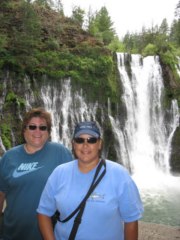
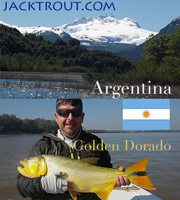


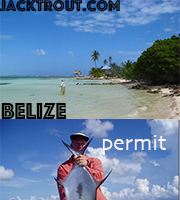


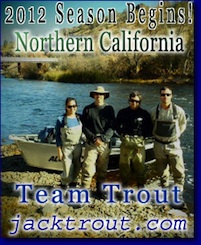

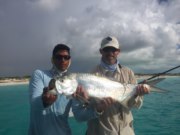




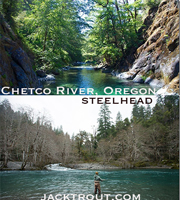




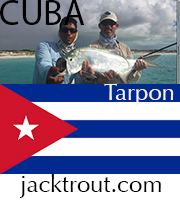









 Mt. Shasta Ski Park
Mt. Shasta Ski Park Shasta.com - Northern CA's premiere business website!
Shasta.com - Northern CA's premiere business website!
 WEED ALES & BREWERY
WEED ALES & BREWERY 
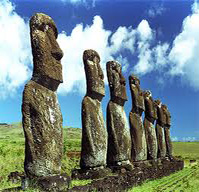 EASTER ISLAND INFORMATION & TOURISM SITE
CHILE!!
EASTER ISLAND INFORMATION & TOURISM SITE
CHILE!! 








